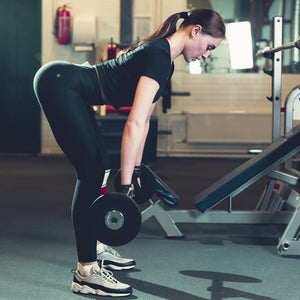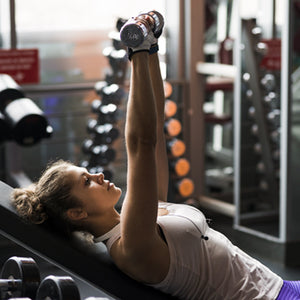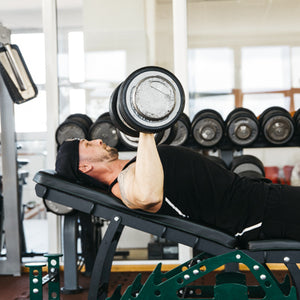
An Easy to Follow Effective Calf Workout
Growing calves can be hard. A lot of lifters’ calves are stubborn to grow, but they aren’t going to grow if you skip leg day.
In order to get your calves to start growing, you’re going to have to start training your calves more frequently — with a bit of volume. A popular saying, “don’t start counting until it hurts” could apply here.
Before we jump into the nitty-gritty of these calf workouts, take a look at your calf and see how it works.
Calf Basics
Your calf does a lot of great things like propelling you forward and assisting in explosive movements. It’s no secret that the stronger your calves, the better you will perform.
What’s worse, if you get your calves strong, your calves will be tight. This will limit your ankle mobility and can increase the chances of injury. Take it from me; you want to keep your calves from getting too tight.
When your calves are too tight, it can increase the likelihood of shin splints, plantar fasciitis, and Achilles tendonitis.
Our calves are made up of two main muscles. When we train our calves, we are training our gastrocnemius and our soleus. If you take a look at your calf, the predominant muscle you see is the gastrocnemius. Your soleus isn’t outwardly visible, it’s under the gastrocnemius.
Even if we can’t see a muscle, we want to train them. The gastrocnemius contributes to the explosive power, speed, jumping, and acceleration. The soleus contributes to our running and walking endurance.
Type 1 muscle fibers are slower twitch muscle fibers that have a high resistance to fatigue. Our soleus contains a high density of Type 1 muscle fibers. The gastrocnemius, on the other hand, can be made of Type 1 and Type 2 fibers, and any combination, which is determined by your genetics.
Calves and Genetics
If you’ve ever been around someone who was gifted with beefy calves, they probably hardly train them. Your genetics have an impact on how your calves develop. This is due to the Type 1 and Type 2 muscle fibers I mentioned earlier.
Depending on your genetics, you are predisposed to a certain muscle fiber allocation. Type 1 muscle fibers have less growth potential than Type 2. So if you have a genetic disposition to have Type 2 fibers, you are going to have more growth potential than someone who is more Type 1 dominant.
If you weren’t born with naturally thick calves, that doesn’t mean you can’t grow. It just means your growth potential could be lower than someone else’s.
Start executing on a solid workout plan, eat the right foods, and make sure to take care of your body so you can grow bigger calves.
If you are looking for a solid calf workout, below is a routine you should perform two to three times per week.
An Easy to Follow Effective Calf Workout
Your calves respond to volume, but that doesn’t mean you have to spend all day doing calf work.
If you can find 15 minutes to spare three days a week, you will start seeing progress in your growth. Keep in the front of your mind that quality trumps quantity and you want to have the longest range of motion as safely possible.
This workout is going to have you doing moderate-rep and high-rep ranges, so be ready to feel some pain.
You can do this routine on its own or you can slap it onto the end of another workout. Keep your rest periods in the 30 to 60-second range so you maintain a high-intensity level.
Day 1
- Jump Squats - Two sets of 12 reps.
- Standing Calf Raise - Three sets of 15-20 reps.
- Jumping Jacks - Three sets of 20 reps.
- Ankle Mobilization - Three stretches held for 30 seconds.
Day 2
- Tiptoe Walks - Walk as long as you can on your tiptoes, start a new set when your heel touches the ground.
- Single-Leg Calf Raise - Two sets of 15 reps.
- Jump Rope - Do three sets of 30 seconds jump roping.
- Standing Wall Calf Stretch - Three stretches held for 30 seconds.
Day 3
- Seal Jumps - Two sets of 20 reps.
- Jumping Calf Raise - Three sets of 15 reps.
- Agility Ladder - 6 runs down the ladder.
- Ankle Mobility - Three stretches held for 30 seconds.






